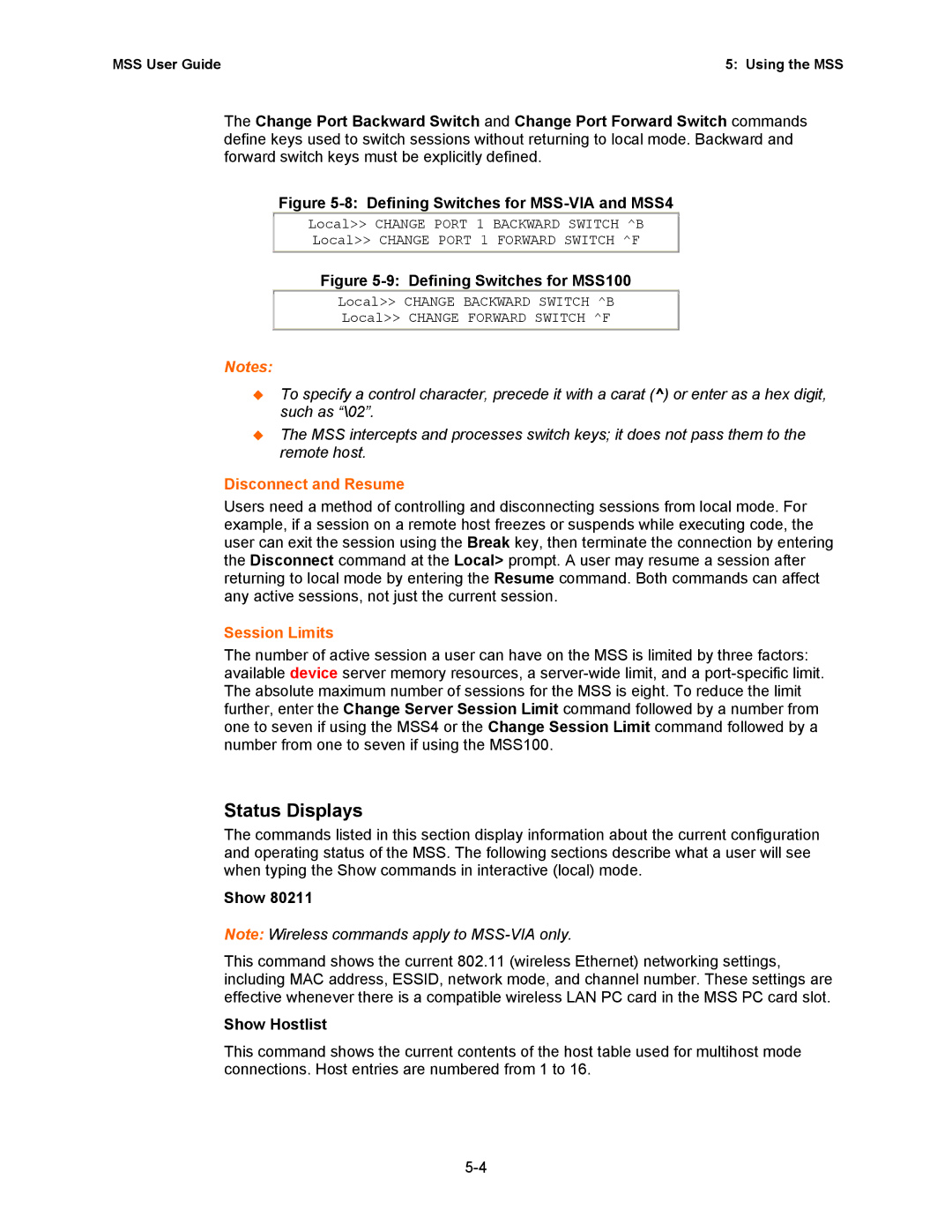
MSS User Guide | 5: Using the MSS |
The Change Port Backward Switch and Change Port Forward Switch commands define keys used to switch sessions without returning to local mode. Backward and forward switch keys must be explicitly defined.
Figure 5-8: Defining Switches for MSS-VIA and MSS4
Local>> CHANGE PORT 1 BACKWARD SWITCH ^B
Local>> CHANGE PORT 1 FORWARD SWITCH ^F
Figure 5-9: Defining Switches for MSS100
Local>> CHANGE BACKWARD SWITCH ^B
Local>> CHANGE FORWARD SWITCH ^F
Notes:
To specify a control character, precede it with a carat (^) or enter as a hex digit, such as “\02”.
The MSS intercepts and processes switch keys; it does not pass them to the remote host.
Disconnect and Resume
Users need a method of controlling and disconnecting sessions from local mode. For example, if a session on a remote host freezes or suspends while executing code, the user can exit the session using the Break key, then terminate the connection by entering the Disconnect command at the Local> prompt. A user may resume a session after returning to local mode by entering the Resume command. Both commands can affect any active sessions, not just the current session.
Session Limits
The number of active session a user can have on the MSS is limited by three factors: available device server memory resources, a
Status Displays
The commands listed in this section display information about the current configuration and operating status of the MSS. The following sections describe what a user will see when typing the Show commands in interactive (local) mode.
Show 80211
Note: Wireless commands apply to
This command shows the current 802.11 (wireless Ethernet) networking settings, including MAC address, ESSID, network mode, and channel number. These settings are effective whenever there is a compatible wireless LAN PC card in the MSS PC card slot.
Show Hostlist
This command shows the current contents of the host table used for multihost mode connections. Host entries are numbered from 1 to 16.
